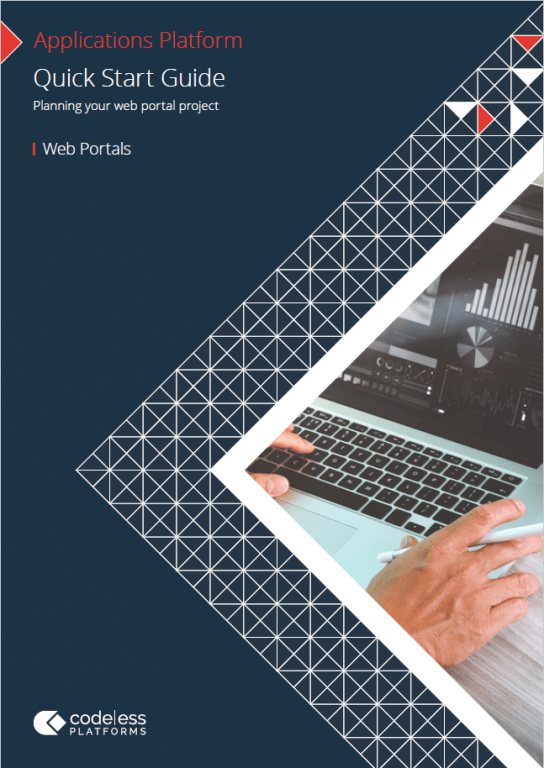What is a web portal? In short, a web portal is a web-based platform that provides employees, customers and suppliers with a single access point to information. A web portal can be used to provide the user with personalised information such as employee training, safety manuals or a customer profile. A web portal can also be used to enhance the collaboration of information and improve the way employees, customers and suppliers interact with your business.
An online business portal can replicate the look and feel of your business and provide you with greater control over your day-to-day processes. Regardless of time or user location, a web portal can be accessed quickly and easily on a desktop or mobile device such as a smartphone or tablet.
Does my business need a web portal?
There are multiple reasons why an SME will look towards web portal development. The process of developing and deploying an online business portal can be triggered from a single ‘pain’ or ‘flash point’ that the business experiences. The key drivers normally include multi-location based teams and offices or the need to improve communication and access to information between your business and suppliers. Of course, these can vary depending on the nature of an organisation and how it operates. Key points that may indicate you need a web portal include:
- Multi-location premises e.g. national/international office
- Home or field-based employees
- Requirement for external contribution to data and processes e.g. to manage supplier or channel retailers
- Requirement to provide a scalable IT licensing option
- Increase visibility of information e.g. by department, manager or tailored for a specific individual
- Existing business systems are missing a critical module that is needed by your exact day-to-day processes
Web Portal Examples
Web portal software helps you to bring information from multiple sources together, allowing content to be shared amongst a variety of departments, customers and suppliers. Common examples of web portals that SMEs deploy include:
- Sales portal
- Project management portal
- Customer portal solution
- Membership portal
- CRM portal
- HR portal
- Intranet portal
- Corporate portal
What types of web portals are there?
There are two types of web portal that can help you shape the way your business operates – vertical or horizontal.
Vertical web portals focus on a specific application or business function such as HR, accounting and finance, CRM, ERP, service management or warehouse management. They enable users from both inside and outside of your business to see, edit and contribute to processes within that given application(s).
For example, an organisation may wish to offer a customer web portal that enables suppliers to read, add to or amend order status details and other related information.
Horizontal web portals provide users with the ability to see aggregated data from multiple applications via a single view experience. (This is not to say that vertical portals cannot aggregate data from other applications, but it’s not their primary focus).
This type of web portal removes the need for users to login to multiple primary business applications to read, write or amalgamate information. It can, therefore, significantly improve the productivity and performance of users.
A common horizontal web portal could take the form of a managerial reporting system that presents Key Performance Indicator (KPIs) information from multiple business systems. Typically, users of these forms of web portals read/generate reports from data within the view they have, but they can also write data or start workflow processes if required.
What are the commercial benefits of a web portal?
The benefits of a web portal can typically include user satisfaction, improved access to important data and basic user login stats. However, most organisations that have deployed web portal software cite that they have achieved the following commercial benefits:
- Removal of back office administration
- Scalable IT licensing options
- Improved decision making
- Improved communication resulting in stronger customer and supplier relationships
Web portal project next steps
There are many factors to consider when selecting the right web portal solution for your business. For example, you will need to consider the type of portal that suits your requirements, who has access and how the portal will be developed. For more information on how to plan your web portal project, download the Quick Start Guide below or call us on +44 (0)330 99 88 700.

